Michael Diaz was 13 when he first experimented with drugs. Before that moment, he was a reserved teenager who had grown up in Chino, California. He prided himself on being "straight edge," firmly against substance use of any kind.
“The first time I tried anything was when I stole weed from my dad,” Diaz said. “I went to a park and smoked it from a pen cap.”
Although seemingly harmless at the time, Diaz quickly progressed to harder drugs like methadone. He did this by stealing prescription pain medication from his father’s medicine cabinet. Diaz said he didn’t realize what a “gnarly” drug it was at the time.
“I remember my twin sister and I both started doing methadone and valium together when we were still in high school,” Diaz recalled. He said the drugs, which were prescribed to his father legally, made him depressed. “I just thought that I wanted to die and that it hurt inside my bones for whatever reason.”
Diaz described the ease of calling the pharmacy to request refills, under the guise of needing more for his father. “My father had zero idea what he was being prescribed, so I would just show up with my ID and money,” he said.
As his drug use intensified and his addiction ramped up, Diaz's life began to unravel. Conflicts escalated with his family. He eventually dropped out of school. By the age of 19, he found himself homeless. “I knew early on I was an addict,” recalls Diaz, “I recognized that it wasn't for pleasure, it was a necessity.”
It wasn’t until he turned 21 that he considered making significant changes in the trajectory of his life. Fearing a lifetime behind bars more than death itself, Diaz started a multi-year journey of seeking out help for his addiction. He reconnected with an uncle and remained sober for a couple of years, but then later relapsed.
“I was so close to being homeless again, I was just like, what am I doing? I didn't want to do this,” he said.
Eventually, Diaz entered a rehab program, where he found solace in a supportive community, on a path to sober living.
Today, Diaz is 10 years into recovery and uses his experience to advocate for institutional and personal growth. He reflects on how sobriety and community involvement have transformed his life, helping him to find purpose.
Diaz is part of a growing community of people across the United States grappling with opioid addiction. According to the Centers for Disease Control and Prevention, overdose fatalities surpassed deaths from car accidents and gun violence combined in 2021. The overdose rates also increased most rapidly among Black, Latinx and Indigenous populations. In 2017, opioid-related deaths began to rise among Latinos, reaching an age-adjusted mortality rate of 5.4 per 100,000 by 2019.
In recent years, Los Angeles County has significantly ramped up its efforts to create a more comprehensive and inclusive strategy for healthier communities. In 2023, drug-related overdose and poisoning deaths plateaued for the first time in ten years in the county.
“Harm reduction and treatment exist on a continuum of vitally important health services that help protect the health and wellness of the community,” said Dr. Brian Hurley, an addiction physician and the medical director of the Bureau of Substance Abuse Prevention and Control in the Los Angeles County Department of Public Health.
Hurley spoke to CALÓ News about the necessity of investing in prevention, treatment, recovery, and community-based harm reduction. He stated that a public health approach, harm reduction focuses on minimizing the negative health, social and legal impacts of drug use rather than solely aiming for complete abstinence.
Harm reduction interventions, like needle exchanges and safe injection sites, have gained traction in recent years, yet remain a divisive issue among politicians because of the stigma around drug users.
In 2022, Gov. Gavin Newsom vetoed a controversial bill that would have allowed San Francisco, Oakland and Los Angeles to launch trial supervised drug injection sites. Newsom stated that he was “acutely concerned about the operations of safe injection sites without strong, engaged local leadership and well-documented, vetted, and thoughtful operational and sustainability plans.”
Undeterred by legislative obstacles, local organizations have taken initiative to tackle the overdose crisis. In a significant step forward, Bienestar Human Services recently launched a new harm reduction center in East Los Angeles. The grand opening, held on September 27, 2024, welcomed community members for an open house that included a communal luncheon. Los Angeles County Supervisor Hilda Solis, representing the 1st district, participated in the ribbon-cutting ceremony and expressed her enthusiasm for the positive impact the center will have on the East Los Angeles community.

Shoshanna Scholar, Harm Reduction Director, LA County Department of Health Services, Richard Contreras, President and CEO of Bienestar and Elly Jalayer, Director of Harm Reduction Services at Bienestar. (Image credit: Bienestar Human Services)
The establishment of the new center is viewed as a critical move to enhance the health and safety of individuals grappling with the complexities of substance use. Elly Jalayer, Director of Harm Reduction Services, emphasized the center's role in addressing the evolving health needs of the community. "This expansion is a testament to our unwavering commitment to identifying and addressing the evolving health needs and wellbeing of our participants,” she stated.
Bienestar Human Services operates a comprehensive Syringe Service Program, which includes mobile outreach initiatives and established sites in Los Angeles, Long Beach, and Pomona. Staff members are trained in harm reduction principles, ensuring a compassionate, welcoming environment free of judgment for those seeking help.
Underscoring the city’s dedication to addressing the opioid overdose crisis, Hurley stressed the importance of eliminating judgment from harm-reduction strategies. “We need to work directly with people that use drugs, without judgment, without expectation or without the idea that somebody that uses drugs is going to be ready to stop their use,” he said.
As a member of the County Department of Public Health, Hurley said the agency aims to reach people who use substances but might not be engaging in treatment options. One of the major barriers to addiction treatment, however, is the reluctance of substance users to seek services.
“We aim to meet people where they are, but we don't leave them there,” Hurley told CALÓ News. “We connect people to housing support, medication services, and of course, when they're ready–treatment services.”
Although harm reduction was not the approach taken by Diaz, he echoed a similar sentiment, noting that there isn’t a blanket solution for all addiction. “I often think, imagine if I had other things in my life that could have provided me the support I needed throughout recovery”
Diaz describes the residential rehabilitation program he attended as a "saving grace," because it effectively addressed the fundamental needs—such as stable housing and healthcare—that he had lacked access to for many years.
Research supports this assertion, highlighting that high-risk drug use appears to be more consistent among those who experience housing instability, especially young adults. Trends found that additional factors like mental health challenges, and lack of access to health care can also contribute to substance use.
Advocates have long argued for the positive impacts of harm reduction interventions. Research demonstrates that certain harm reduction strategies offer substantial benefits for both individual and public health. These strategies play a critical role in preventing overdose deaths and reducing the transmission of infectious diseases among people who use drugs into the broader community.
Over the past three years, harm reduction initiatives have reached more than 140,000 people, reversed over 30,000 overdoses, and expanded access to naloxone, an overdose-reversing medication, by 500%. These efforts have also bolstered a strong network of community-based partners that deliver essential health services across numerous neighborhoods, including those with large Latino populations.
Grassroots initiatives, like those spearheaded by the Mars Collective, frequently collaborate with local communities to offer drug testing services, educational materials on safe drug use, and access to naloxone—most commonly known through its nasal spray brand, Narcan. The Mars Collective is made up of five core members and primarily engages with L.A.’s punk scene but has expanded to serve other communities.

the Mars Collective frequently tables at local community events, providing drug tests and educational resources on safe drug use and naloxone. (Image credit: The Mars Collective)
“I think fear sometimes prevents people from interacting with our work,” said B. Frío (they/them), a founding member and committed volunteer with the Mars Collective. Frío emphasized that the collective focuses on combatting unsafe drug use, such as fentanyl lacing, as opposed to pushing for sobriety.
Frío spoke with CALÓ News the importance of combatting the stigma surrounding harm reduction as a means to foster proactive approaches to addiction. “It's just inevitable that there is going to be unsafe drug use in certain spaces” they stated, “but the sooner that we acknowledge the problem, the sooner we can help.”
The formation of The Mars Collective was driven by the tragic overdose of a close friend, Mars, underscoring the organization's commitment to honoring their memory. Frío first met Mars while protesting, recalling that “even at a young age, Mars was just so fearless and outspoken.”
Mars was remembered by friends as being fashionable, funny and independent. Although Mars sometimes struggled to maintain sobriety they found solace in the community, They frequented The Smell, a well-known all-ages, alcohol- and drug-free punk rock and experimental music venue in downtown Los Angeles. Frío and Mars would frequently attend Alcoholics Anonymous meetings together. “They were a really good friend,” Frío said.
Mars died only a few months after their 20th birthday due to a drug-related overdose. The loss of the beloved community member sent shock waves throughout the punk scene and highlighted the need for naloxone to be more readily available.
The loss of Mars deeply affected Frío, who was raised in a Catholic Peruvian household where conversations about drug use were virtually nonexistent. Like many first-time users, Frío’s early experiences with drugs were marked by risks, largely due to the stigma surrounding discussions of safe drug practices.
In many Latino households, discussing drug use can be fraught with stigma, rooted in cultural values and beliefs about family, religion, and personal responsibility. This stigma often stems from a deep-seated fear of judgment and shame, leading families to avoid open conversations about substance use and its impacts.
Breaking the stigma around harm reduction necessitates fostering an understanding of the complexities of addiction, similar to the efforts undertaken by The Mars Collective. Community initiatives focused on education and awareness can dispel myths and reduce stigma, empowering families to engage in open and honest discussions about drug use and its impact.
By prioritizing safety, education, and support, these strategies not only reduce the risks associated with drug use but also foster a healthier, more compassionate approach to addiction.
“I've been sober for two years now,” said Frío. “ I would like to think in some universe Mars would be in a version of their recovery too.”

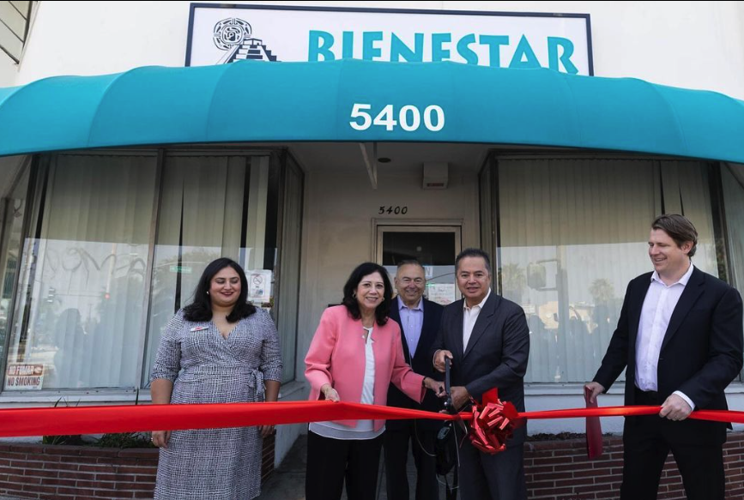
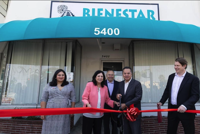
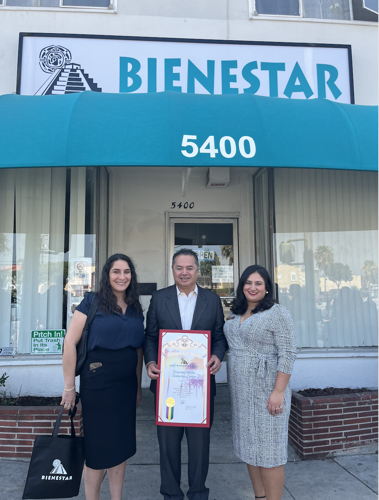
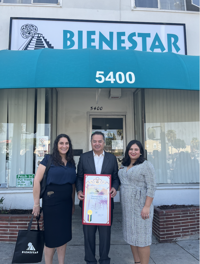
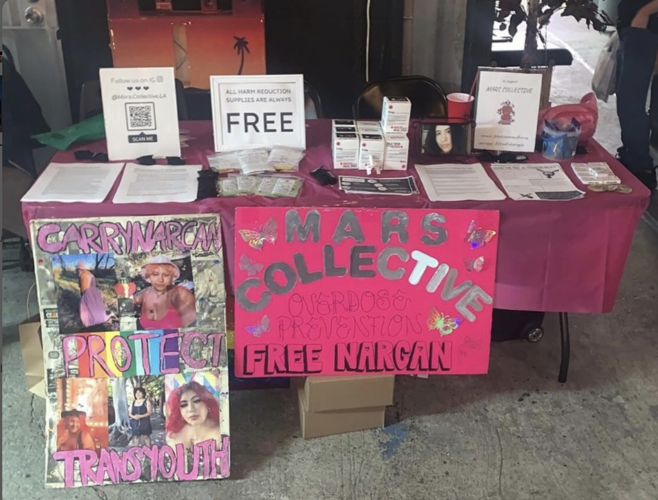

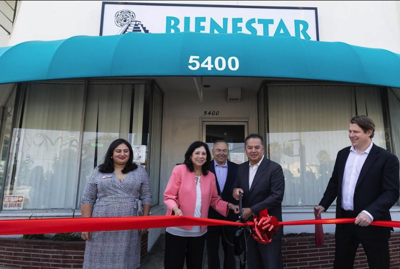








(0) comments
Welcome to the discussion.
Log In
Keep it Clean. Please avoid obscene, vulgar, lewd, racist or sexually-oriented language.
PLEASE TURN OFF YOUR CAPS LOCK.
Don't Threaten. Threats of harming another person will not be tolerated.
Be Truthful. Don't knowingly lie about anyone or anything.
Be Nice. No racism, sexism or any sort of -ism that is degrading to another person.
Be Proactive. Use the 'Report' link on each comment to let us know of abusive posts.
Share with Us. We'd love to hear eyewitness accounts, the history behind an article.